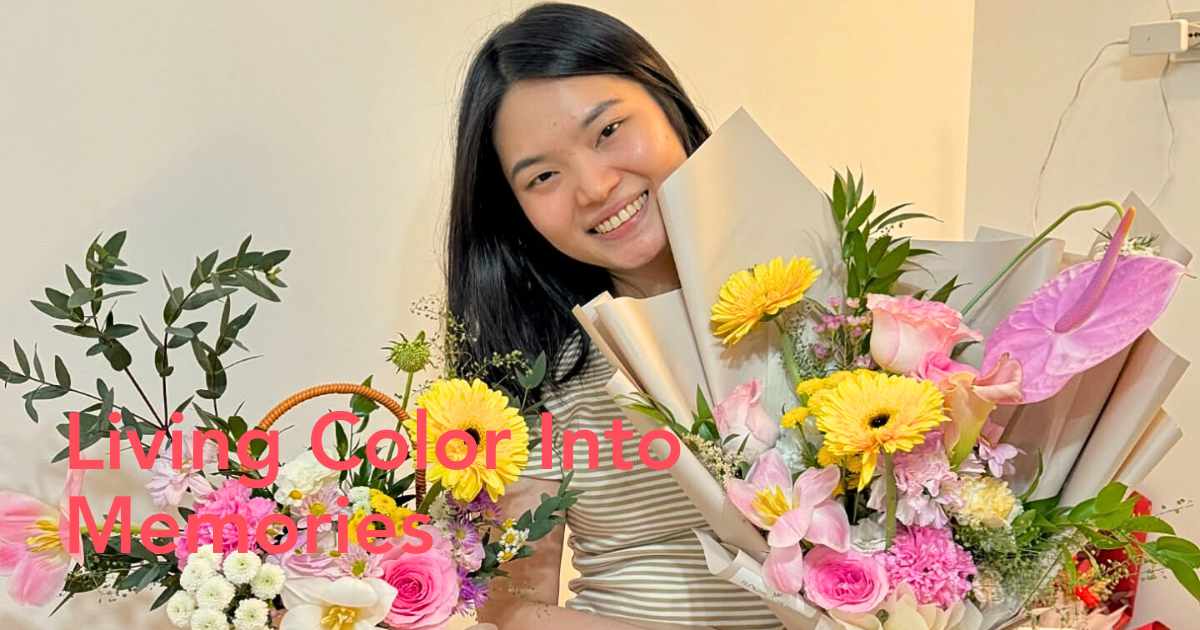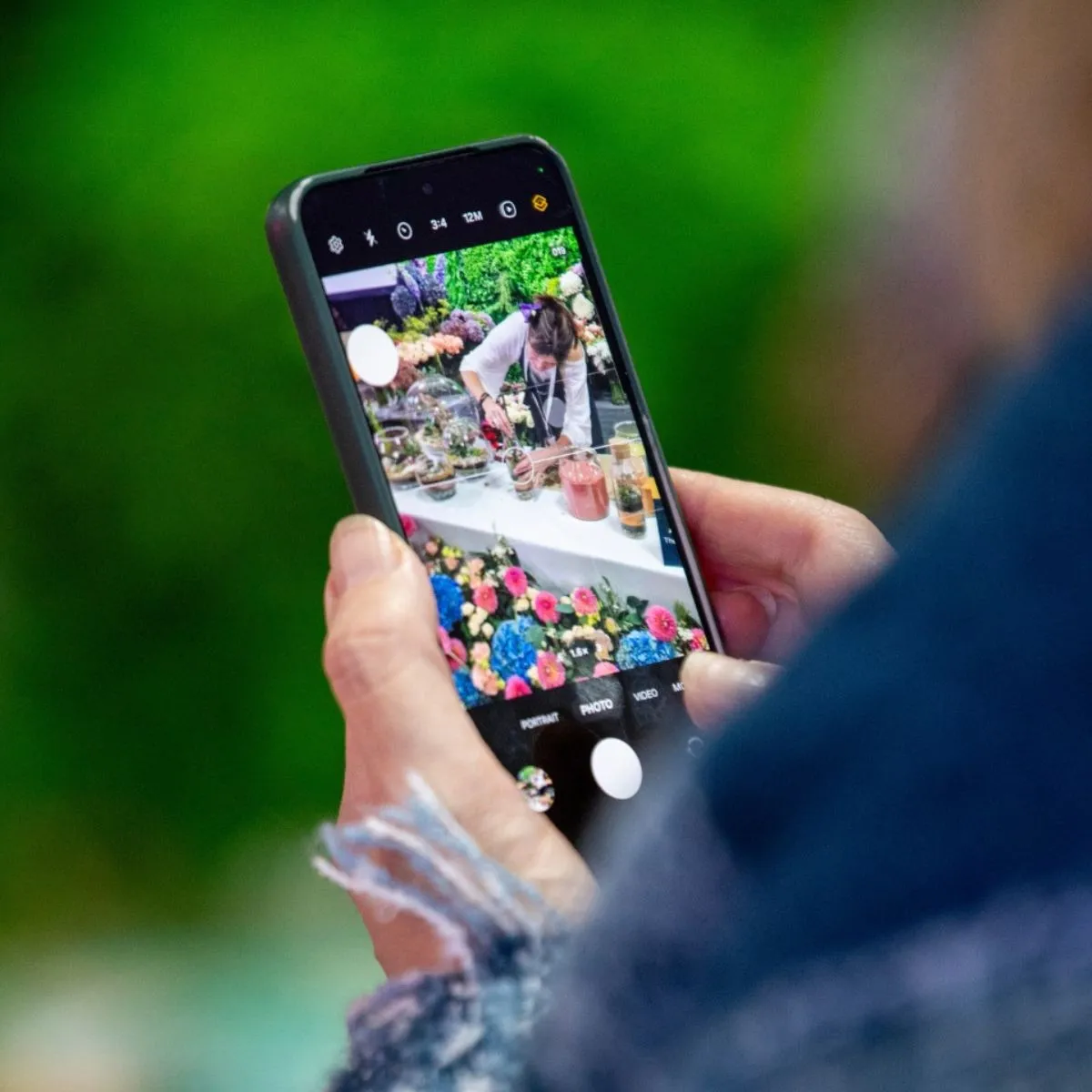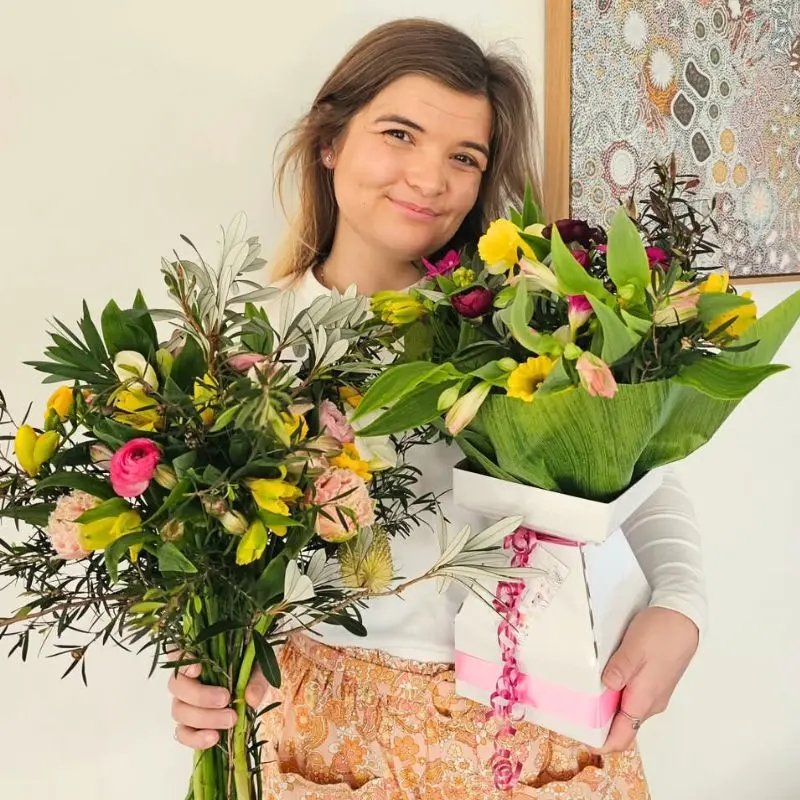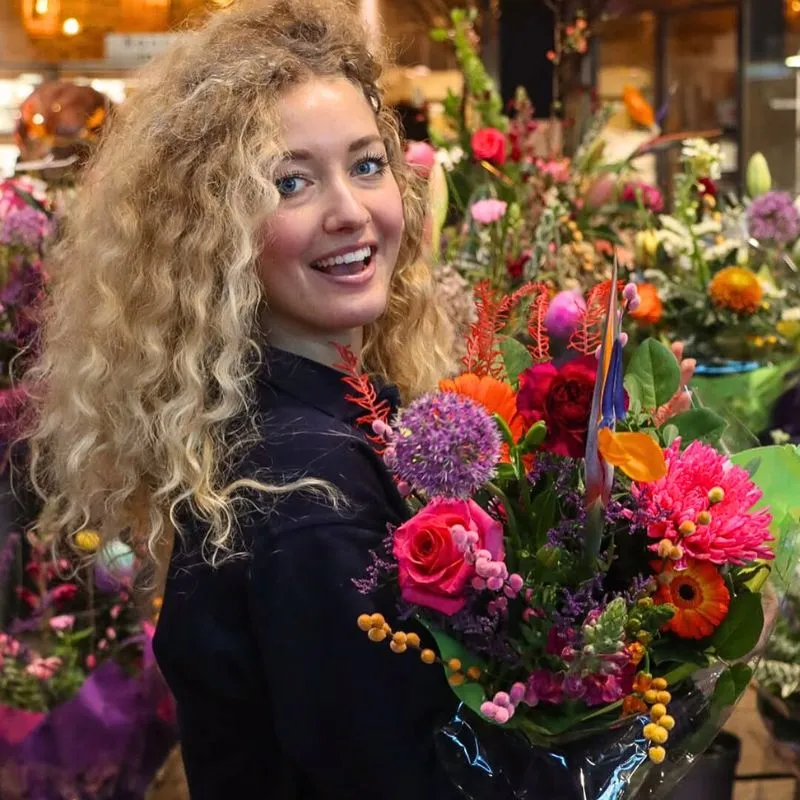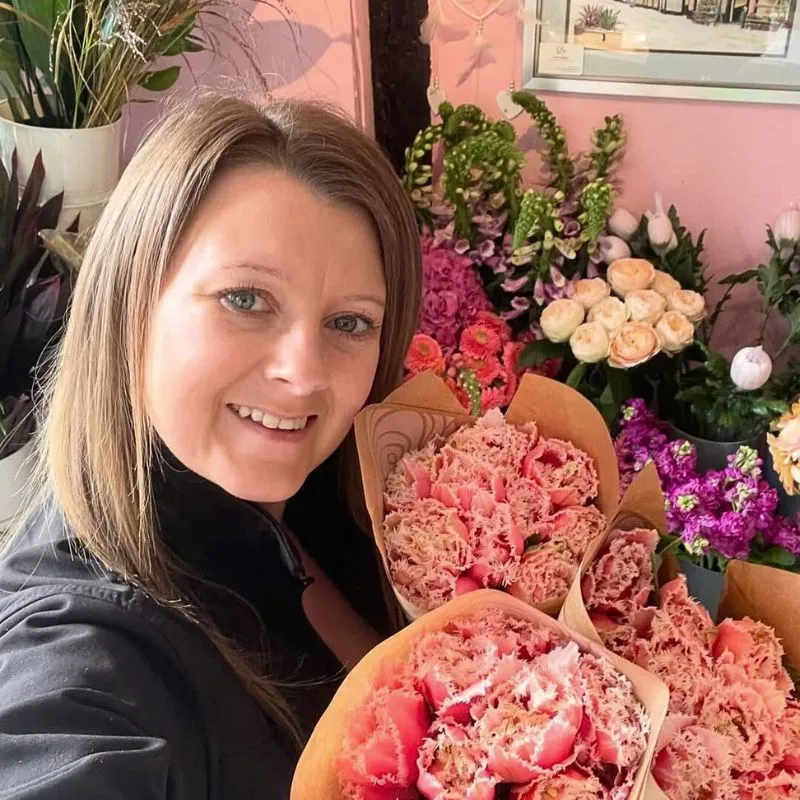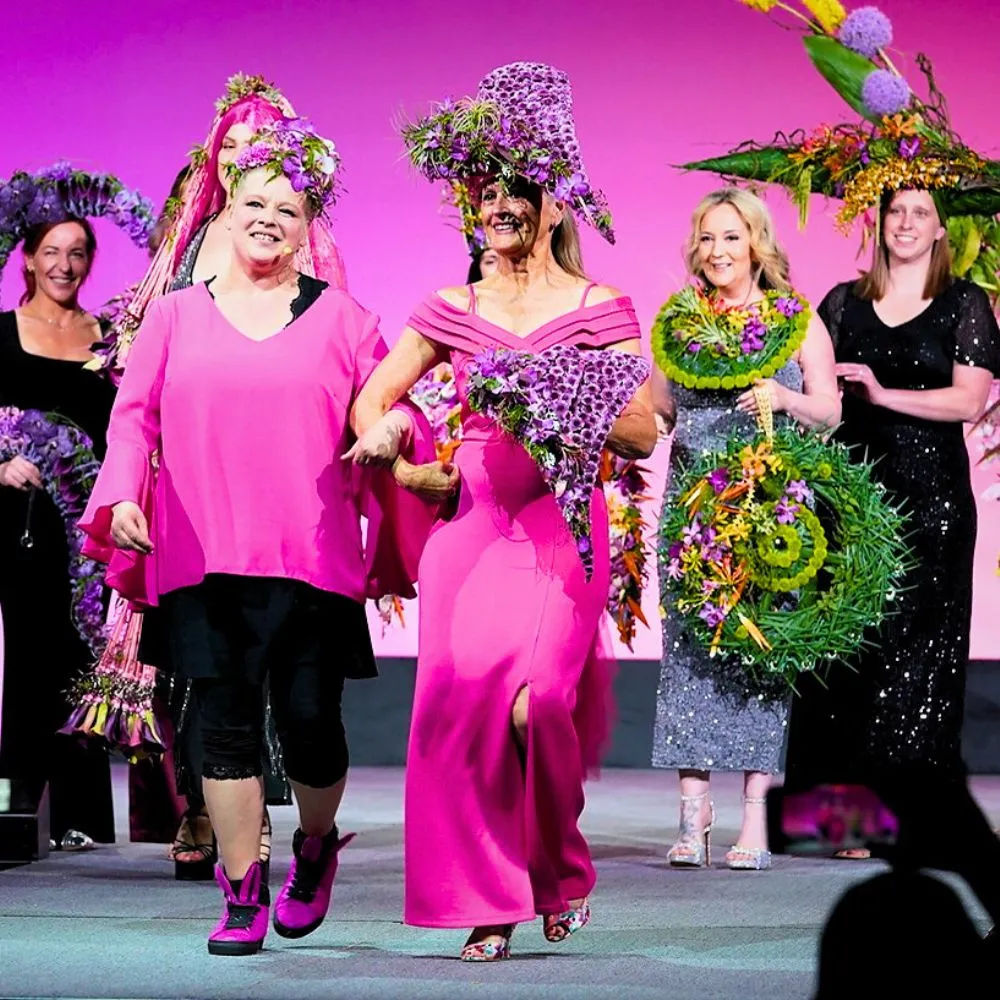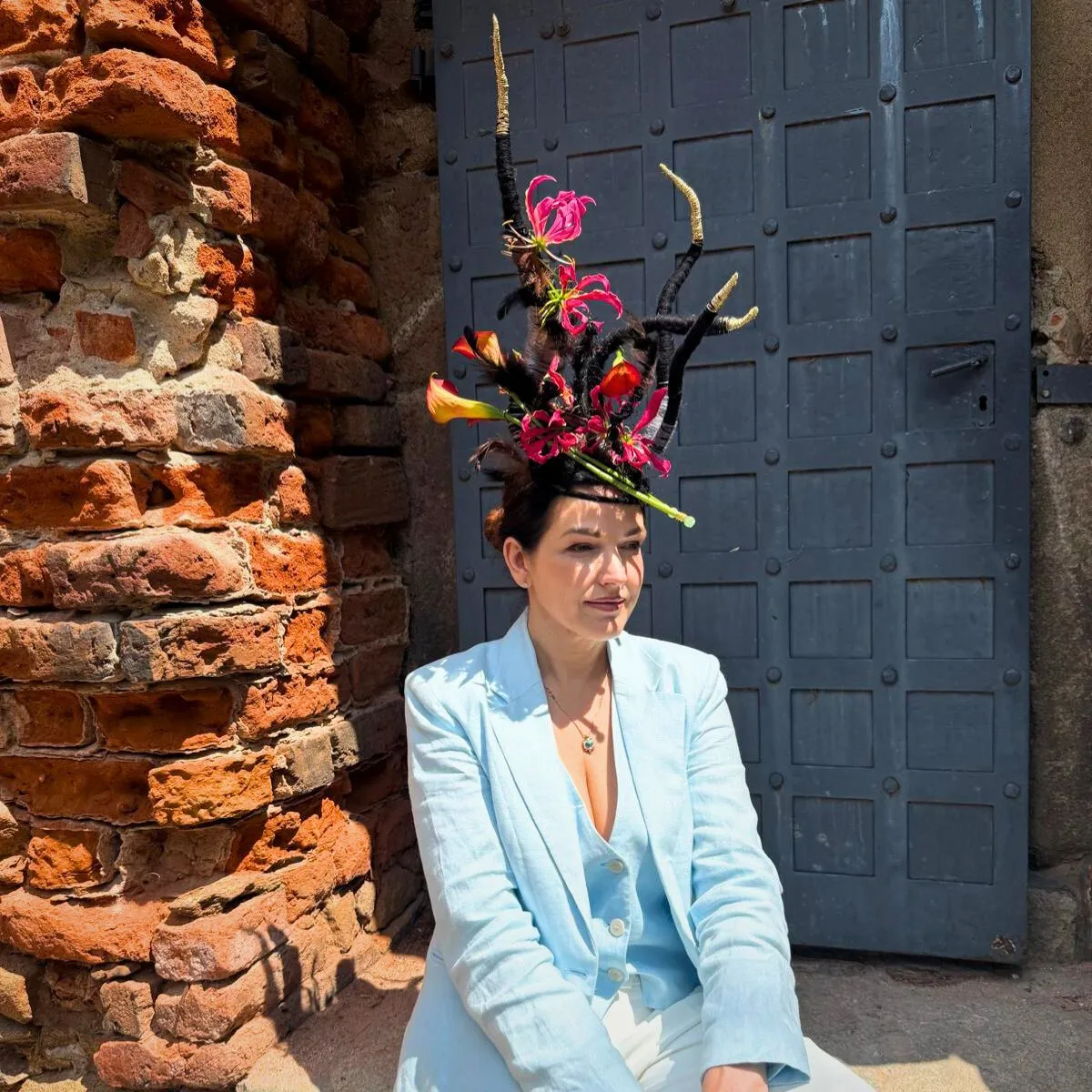Everyone loves flowers, yet only a determined few translate blossoms into art that sells. To become a florist, you must couple instinctive creativity with disciplined craft, commercial savvy, and the willingness to handle buckets of freshly cut flowers at dawn.
Here is a long-form guide that charts every credible classroom, apprenticeship, and additional tips so you can decide which path fits your personality, your long-term goals, and your pocket.
Is It Difficult to Become a Florist?
The short answer: yes—and that’s why the work is rewarding. You juggle colour theory, stem biology, supplier negotiations, and strict delivery deadlines. Peak seasons (think Mother’s Day, Christmas, and spring weddings) demand additional hours and impeccable time management.
Yet no other industry lets you turn living color into memories for different occasions: graduations, memorials, corporate galas, or intimate elopements.

Academic writing also shadows the journey. Botany essays, design journals, and business plans prove you can communicate ideas as clearly as you wire an arch. Consider them rehearsals for the proposals and branding copy you’ll later present to customers and investors.
Study Options for Future Floral Designers
Are you ready to pursue this career? Let’s go through your options.
High‑School Roots—Where Creativity Begins
Art, biology, horticulture, and small‑business electives build the bedrock. Volunteer to create prom bouquets or table garlands; help local grocery stores refresh tired displays of cut flowers. The sooner you handle flowers, the faster you recognise how most flowers react to heat, bacteria, and time.
Certificates, Diplomas & Degrees
You don’t need a bachelor’s to open a flower shop, but structured study accelerates mastery. The American Institute of Floral Designers’ Certified Floral Designer (CFD) badge is the North American benchmark; Europe’s European Master Certification (EMC) and the UK’s Royal Horticultural Society Level 3 Diploma carry equal prestige. Australia’s TAFE Certificate III in Floristry, FlowerSchool New York’s Professional Programme, and the Boerma Instituut in the Netherlands blend global theory with regional botanicals.
Coursework covers floral design concepts, retail maths, digital marketing, eco‑friendly mechanics, and project pricing. Finishing modules on merchandising and e‑commerce prepare you to run your own retail space or manage multi‑location flower shops.
Apprenticeships & Mentorships—Learning Beside Other Florists
Shadowing an experienced floral designer reveals tricks no book can teach: coaxing reluctant peonies to open, improvising when suppliers deliver the wrong shade, or calming nervous brides. Many studios hire entry‑level staff for busy Saturdays; the pay is modest, but the education is priceless. You’ll wire boutonnieres, write quotes, mop floors, and gradually graduate to signature floral arrangements for luxury events.

Online Courses, Free Videos & Continuing Education in Floral Design
A free video on spiral hand‑tied bouquets can spark new ideas at midnight. Platforms like Skillshare, Domestika, EMC’s digital classroom, and AIFD’s online modules let freelance floral designer parents study after bedtime or rural creatives learn without relocating. Vet each course: look for live feedback, portfolio reviews, and clear syllabi covering mechanics, colour theory, and floral design knowledge.
Choosing the Right Institution—Global Highlights
- AIFD Career Development Series (USA) – semester‑long intensives culminating in a juried practical exam where candidates must create a cohesive suite of arrangements under timed conditions.
- European Master Certification (Belgium) – hybrid model pairing online theory with a two‑week Belgian residency that focuses on avant‑garde floral designs for couture runways and high‑budget weddings.
- Judith Blacklock Flower School (UK) – famed for seven‑day courses that move seamlessly from supermarket bouquets for grocery stores to lavish staircase installs in heritage hotels.
- FlowerSchool New York (USA) – its Entrepreneurship Module aligns floral art with cash‑flow forecasting, supplier contracts, and digital sales funnels, perfect for anyone eyeing their own floral business.
- Boerma Instituut (Netherlands) – Dutch masters drill precision wiring, stem grading, and international market standards, reinforcing the reputation of Amsterdam as a global flower hub.
Each school publishes graduate placement rates and tuition breakdowns. Scrutinise those numbers before committing.
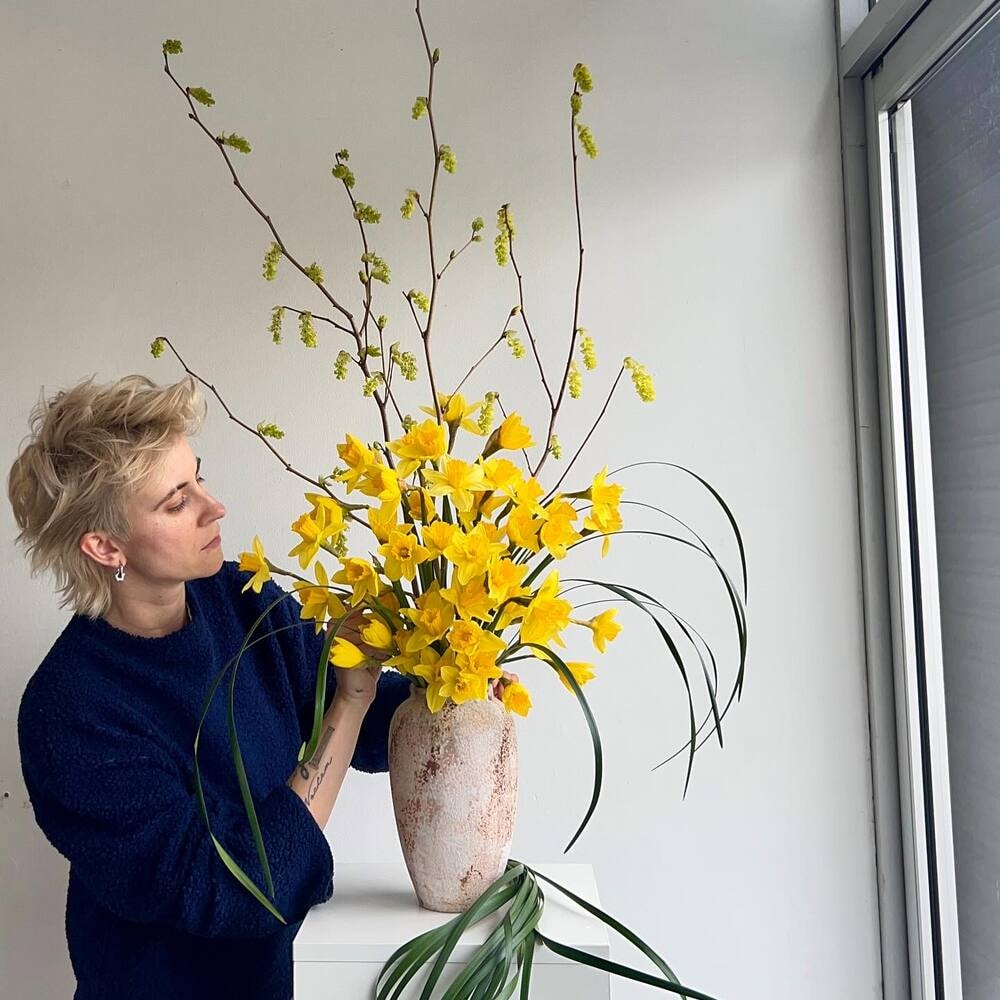
From Classroom to Shop Floor—A Step‑by‑Step Roadmap
- Immerse Yourself in Flowers – Visit wholesale markets at dawn; study how florists hydrate products and adjust pricing according to bloom rarity. Handling most flowers yourself grounds theory in muscle memory.
- Gain Experience Through Part‑Time Work – Weekend shifts in grocery stores or a busy flower shop teach sanitation, stock rotation, and retail rhythm—skills core to any floral business.
- Apprentice Under a Master – A season with a veteran mentor boosts wiring speed, colour confidence, and stress resilience. They’ll push you to sketch new flowers and protect your unique style rather than mimicking other florists.
- Formalise Your Credentials – Passing an AIFD or EMC exam shows would‑be customers and high‑profile wedding planners you respect global benchmarks.
- Launch Your Own Business – Choose between a bricks‑and‑mortar flower shop, a home studio, or pop‑ups. Your model shapes overheads, suppliers, and the mix of events you pursue.
- Diversify Through Freelance Work – Acting as a freelance floral designer bolsters income, expands your designer network, and lets you test niches—from fashion editorials to hotel contracts.
- Grow a Recognised Brand – Stream behind‑the‑scenes reels, publish transparent pricing, and consistently deliver flawless arrangements. Word of mouth remains the florist’s oldest—and cheapest—advertising channel.
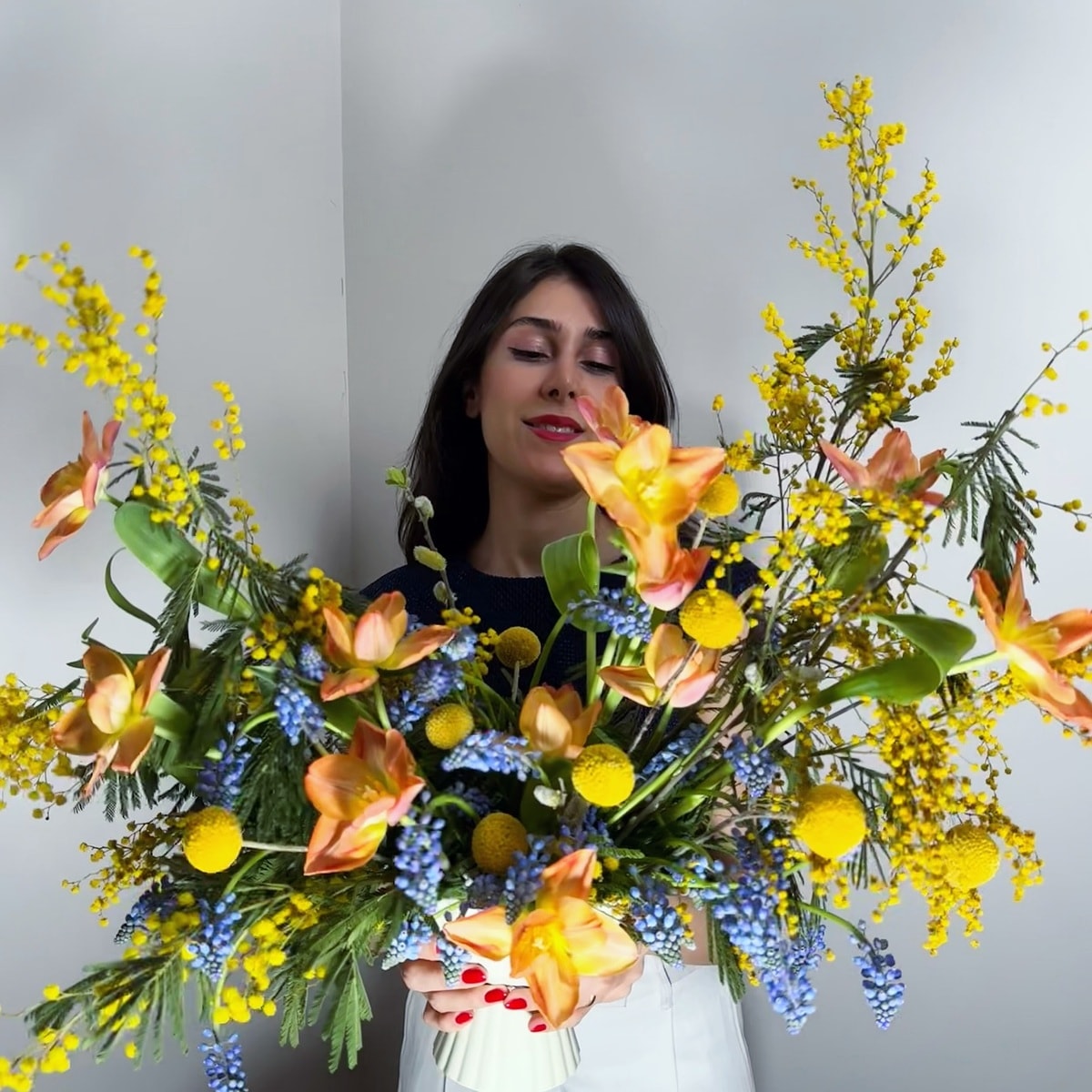
Key Skills Every Floral Designer Must Master
- Botanical Science – Understanding vase‑life extends profitability and pleases customers.
- Structural Engineering – Large ceremony arches or corporate lobby installations demand rock‑solid mechanics that keep heavy floral arrangements intact for hours.
- Colour & Design Style – Whether minimalist or baroque, coherent palette work distinguishes a designer with vision from a hobbyist.
- Client Communication – Clear proposals, mood boards, and honest timelines convert enquiries into paying customers.
- Supplier Management – Relationships with farms, wholesalers, and freight agents ensure new flowers arrive on time.
- Entrepreneurship – Forecasting, tax compliance, and digital marketing separate sustainable shops from short‑lived hobby ventures.

Floristry Specialisations & Market Niches
Beyond the traditional bouquet shop, the modern floral industry branches into funeral artistry, experiential brand activations, botanical product development, and large‑scale immersive installations. Some designers focus on weekly lobby contracts for retail businesses, others create theatrical sets, while a few floral designers choose strictly botanical couture. Exploring niches multiplies revenue streams and keeps your career exciting.
Financing Your Floristry Education
Prestige courses can be expensive, but municipal grants, small‑business loans, and scholarships from trade associations lighten the load. Many trainees balance weekday classes with evening freelance work to pay tuition. Before signing, compare syllabi, hidden consumables fees, and real‑world placement statistics to be sure the programme is a good fit.
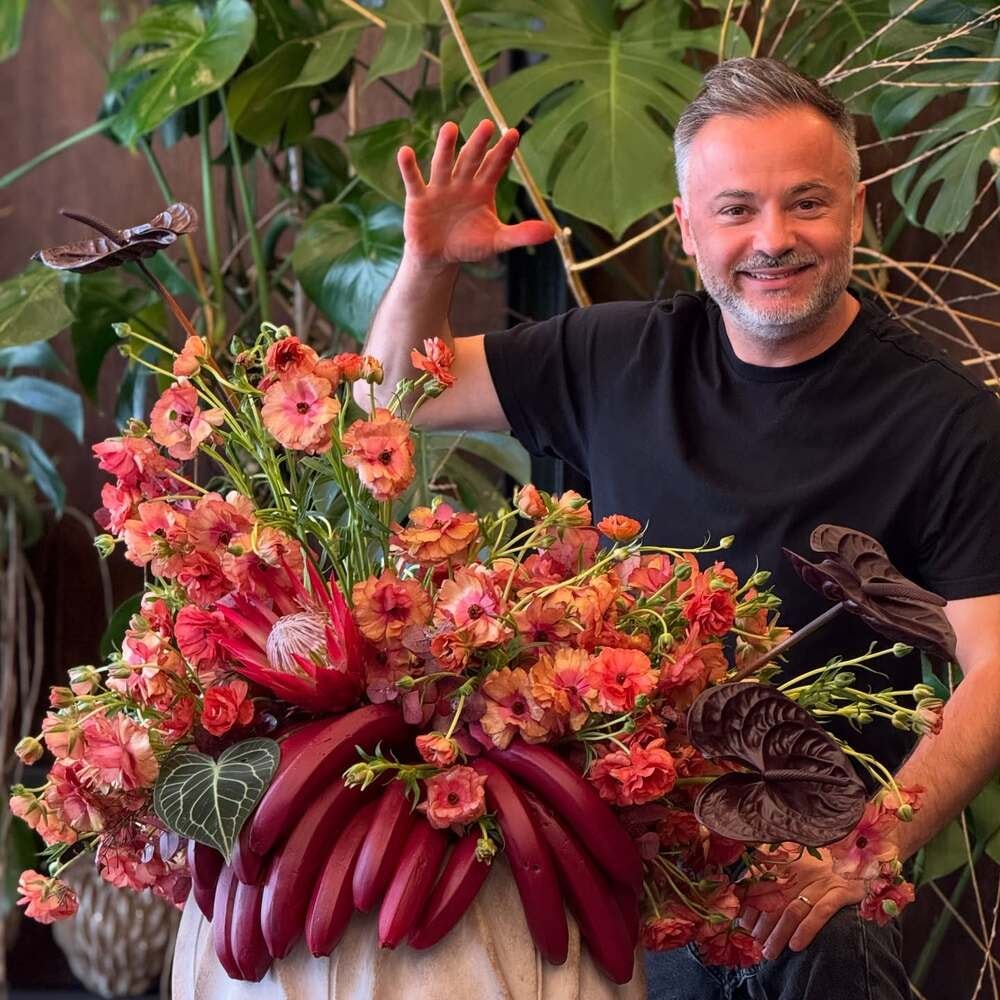
The Global Community—Why Networking Matters
From Facebook forums to international trade shows, the wider community propels your growth. Swap care hacks for delicate blooms, collaborate on destination weddings, or co‑host workshops that sell flowers and knowledge simultaneously. These alliances often surface lucrative opportunities you could never reach alone.
Floral Business Acumen—From Bouquet to Bottom Line
Operating a profitable floral design business requires more than artistic flair. You’ll study the cost of goods, labour hours, digital funnels, and competitive market analysis. Decide early whether to chase volume retail, high‑margin couture pieces, or a hybrid. Your choice dictates staffing, refrigeration, delivery van investments, and the rhythm of your professional life.
Transparent pricing fosters trust; tiered menus help customers understand value. A robust CRM captures leads from bridal expos, corporate showcases, and social media. Finally, periodic SWOT analyses keep strategy aligned with evolving trends and long term goals.
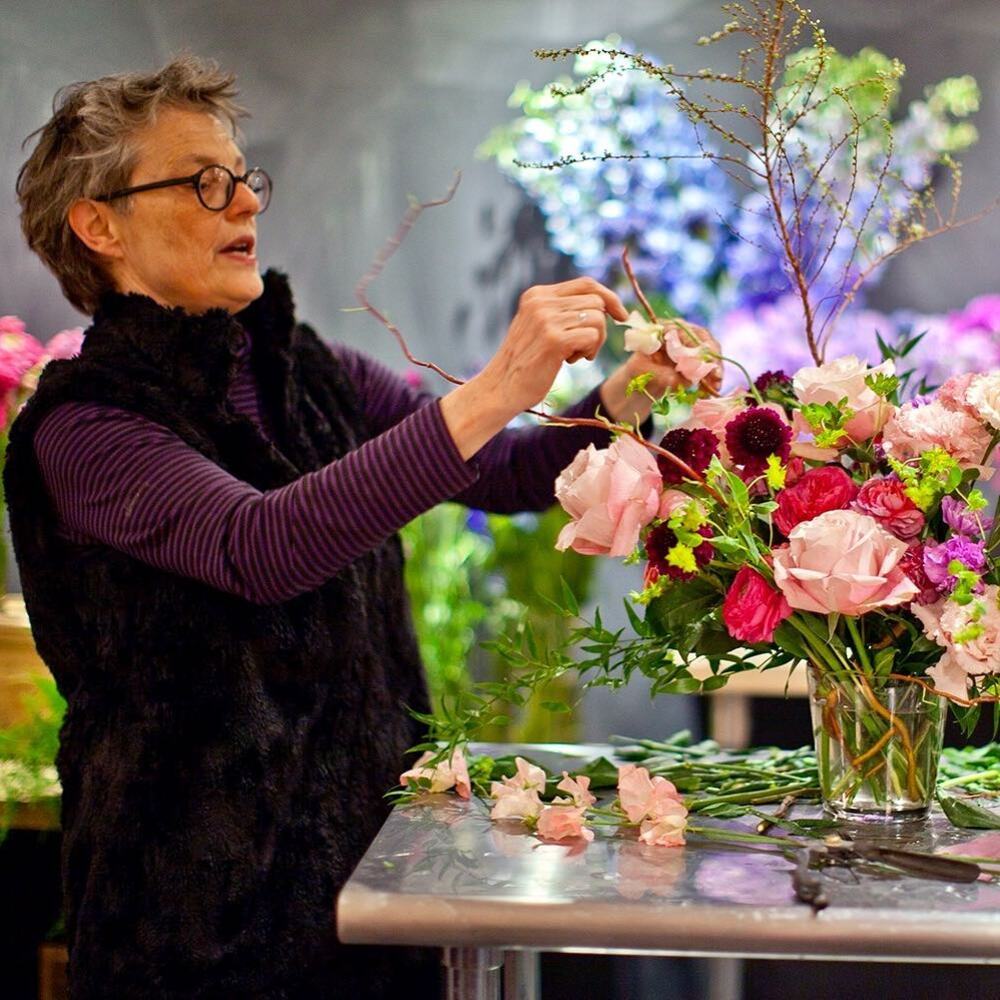
Daily Studio Life—Job Duties in Real Time
- Dawn – condition cut flowers, log deliveries, and huddle with staff.
- Morning – design bridal table mock‑ups, email quotes, reorder oasis or sustainable mechanics.
- Afternoon – assemble cascading bouquets, troubleshoot late shipments, and photograph completed arrangement suites.
- Evening – clean buckets, reconcile sales, update Instagram stories to showcase today’s floral designs.
The cadence is physical but never dull; each day’s palette and customer brief differ from the last.
Salaries, Outlook & The Lure of Freelance
Average earnings vary by region, but niche specialists and boutique owners regularly out‑earn mass‑market chains. Hybrid models—weekday retail, weekend events, plus ad‑hoc editorial shoots—maximise revenue and keep the creative muscle flexed.
From Student to Mentor—Closing the Circle
After a decade of varied installs, large events, and published editorials, many florists pivot into teaching. Workshops, online courses, and guest lectures not only diversify income but also preserve the craft for the next generation.

Complete Your Education, Complete Your Dream
To become a florist is to weave study, stamina, and soul into a single vocation. Pair accredited schooling with relentless practice, embrace both business spreadsheets and delicate petals, and you’ll create floral designs that echo far beyond the studio. Enrol, apprentice, iterate—and watch your flower story unfold petal by petal.
Wherever you study, remember: the studio is only the starting line. Respect every stem, honour every client, and the natural beauty you shepherd will return the favour, season after glorious season.

